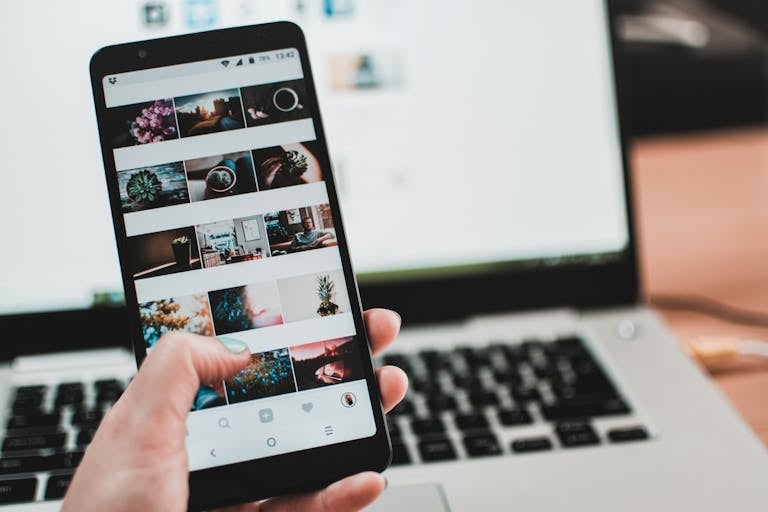Diversity and Inclusion in the Legal Profession: Why It Makes Cents
A headline in the Washington Post reads, “Law is the least diverse profession in the nation. And lawyers aren’t doing enough to change that.” According to data from the Bureau of Labor Statistics, nearly 9 in 10 lawyers are white. Because lawyers comprise a significant portion of the government leaders and lawmakers in the United States, this lack of diversity in the legal profession has left the voices of many disadvantaged minority groups unheard and has significantly impacted the ability of these groups to combat injustice. Furthermore, many potentially lucrative legal markets remain untapped because few lawyers know these legal markets exist. Other professions and corporations are recognizing that this moral and ethical obligation toward diversity and inclusion also yields many economic benefits. In the legal profession, innovative programs like the Chicago Bar Foundation’s Justice Entrepreneurs Project (JEP), are exploring new ways of delivering affordable legal services to underserved communities.
The purpose of this article is to raise greater awareness of the diversity problem in the legal profession, offer ethical and economic incentives gathered from other professions to encourage law firms and legal professionals to address this issue, and propose recommendations to facilitate increased diversity and inclusion in the legal industry.

In June 2015, Deborah L. Rhode released The Trouble with Lawyers which documented shocking statistics about the lack of diversity in the legal profession. According to data from the Bureau of Labor Statistics, 88% of lawyers are white compared to architects and engineers (81% are white), accountants (78% are white), and physicians and surgeons (72% are white).[i] Lawyers play a significant role in shaping the policies of this country. More than half (25 out of 44) of the presidents of the United states are lawyers.[ii] Furthermore, lawyers consist of 41% of the U.S. Congress. This country’s current Congress (the 113th Congress) under the leadership of President Obama, the country’s first African American president, is the most diverse Congress in history. However, the 113th Congress does not reflect the ethnic, economic, and social diversity of its constituents. According to research conducted by the Social Science Research Council, members of Congress are overwhelmingly male, white and over the age of 65 while nearly half of the U.S. population is female, more than one third is not white, and the overwhelming majority is under the age of 65. Furthermore, the median earnings of Congresspersons is nearly six times that of the average American.[iii] Therefore, it is difficult to ensure that the needs of the low and middle income Americans are being understood, advocated for, and met.
In the legal profession, the lack of diversity is contributing to the “Justice Gap.” The justice gap is a term to describe the “difference between the current level of legal assistance and the level which is necessary to meet the needs of low-come Americans.”[i] While the U.S. government provides funding through the Legal Services Corporation to legal aid organizations to provide legal services and representation to low-income Americans, legal aid is unable to meet the needs of all eligible candidates. Legal aid organizations reject almost one million cases per year due to limited resources.[i] Furthermore, a large population of individuals are over-income for legal aid and have limited access to affordable legal services. Large law firms do not typically handle cases for middle income individuals so these individuals rely on smaller firms and solo attorneys for service. Unfortunately, many barriers limit their ability to find an attorney. While law schools are making efforts to increase diverse candidates, the pool of diverse law students matriculating into the legal profession continues to be relatively small and crushing debt loads make it cost-prohibitive to service middle class clients. Furthermore, attorneys committed to serving these populations are ill-equipped to handle clients with cultural and socioeconomic barriers including literacy issues, language barriers, disabilities, and mental illness.
Representation by an attorney is essential to maximizing the likelihood of a successful outcome in a legal matter. Research shows that pro se litigants, individuals who are unrepresented by lawyers, have worse outcomes than represented litigants. According to a survey of nearly 1,200 state trial judges around the country conducted by the American Bar Association Coalition for Justice survey, 62% of these judges said outcomes for pro se litigants are worse than those with legal representation.[ii] The reason for the difference in outcomes is the pro se litigants’ inability to present necessary evidence. Given the social, cultural, and economic barriers many pro se litigants face as well as the complexity of the American justice system, it is no surprise that they are unable to successfully advocate for themselves.
Interestingly in the legal profession, the ABA rules requires that “all lawyers should devote professional time and resources and use civic influence to ensure equal access to our system of justice for all those who because of economic or social barriers cannot afford or secure adequate legal counsel.”[i] While we are governed by ethical obligations to the profession, there are economic benefits to increasing diversity and doing good that the legal profession should explore. The medical profession and other industries have found that increasing diversity and inclusion have not only improved services to previously underserved communities, but they have yielded economic benefits.
The medical profession has been committed to increasing access to regular health and wellness services in order to better contain healthcare costs. Not only is this better for the overall health of individuals, but there are also tremendous healthcare cost savings and improved health outcomes by reducing avoidable visits to the emergency room. Research has shown that at least one-third of all emergency room visits are non-urgent and over $18 billion dollars are wasted annually for avoidable emergency room visits.[ii] Much of the costs for emergency room care cannot be recovered because one in five patients treated in the ER lack health insurance.[iii] Distrust of doctors is a key reason Americans fail to attend regular check-ups, particularly for those with different beliefs about disease and healing.
One interesting case study addressing the challenges to treatment posed by cultural barriers is the Mercy Medical Center in Merced, California, which also serves as the setting of the New York Times best-selling book The Spirit Catches You and You Fall Down.[i] Following the cultural conflict that led to the tragedy of a young Hmong patient with epilepsy, Mercy Medical Center decided to explore innovative ways of better serving the healthcare needs of its community comprised of a large Hmong population who were displaced following the Vietnam War. Cultural beliefs of the Hmong people view surgery, anesthesia, blood transfusions, and other common medical procedures in Western medicine as taboo. As a result, the Hmong people were hesitant to seek treatment from western doctors. When they did have to see a doctor for emergency care, they refused life-saving medical treatments.[i]
Rather than ignoring the cultural barriers that obstructed care for the Hmong community, Mercy Medical Center embraced them and implemented a unique health policy (the first of its kind in the United States) to encourage the Hmong people in its surrounding areas to seek medical treatment. Shamans, spiritual healers trusted by the Hmong people, were hired on staff to work alongside physicians to provide healthcare services to Hmong patients. By acknowledging and respecting the belief systems of Hmong patients, Hmong people were not only seeking medical treatment at Mercy Medical Center, but they also became more open to the benefits of western medicine. After Mercy Medical Center implemented its program, other hospitals began implementing similar programs to improve services to their communities. Health service providers in northern Arizona have hired “medicine men” to treat Navajo patients. White Memorial Medical Center in Los Angeles have referred patients to traditional Hispanic healers.
Outside of the medical profession, companies are seeing the benefits of diversity and inclusion not only as a moral imperative, but also as a competitive advantage in this global economy.[i] Many companies recognize that they are losing talent due to personal biases and company policies that unfairly penalize diverse individuals. A study asking the question “Are Emily and Greg More Employable that Lakisha and Jamal?” found that resumes with “White names” received more callbacks than resumes with “Black names” even when their credentials were equivalent. Furthermore, high-quality resumes with “Black names” received less callbacks than lower-quality resumes with “White names.” This kind of unconscious bias can leave the door to opportunity closed for many qualified candidates.[ii]
For candidates who are hired, unconscious biases may drive them out of the company. More and more companies are offering flexible work arrangements that allow opportunities for employees to work from home.[iii] This can be appealing to Millennials, working parents, or individuals with caregiver responsibilities. While company policies allow these flexible arrangements, a company’s culture may view individuals who take advantage of them as “less committed” often passing these individuals over for large projects or promotions. Hostile work environments that do not promote a culture of diversity and inclusion can cost a company not only the loss of talented employees but also “hundreds of thousands, or even millions, of dollars in replacement costs.”[iv] To help promote work cultures that embrace diversity and inclusion, more companies are hiring diversity and inclusion professionals to develop better working environments. The responsibilities of diversity and inclusion professionals have evolved from merely compliance with affirmative action quotas to “building skills and competencies that enable learners not only to value differences but also to be able to utilize them in making better business decisions.”[i] Additionally, federal and state laws provide additional protections to promote diversity and inclusion by prohibiting discrimination against employees within protected classes. Furthermore, some states like Illinois have expanded discrimination protections to additional groups including pregnant women, caregivers, and the LGBT community.[ii]
The legal profession lags behind in promoting diversity and inclusion. According to the World Justice Project’s latest Rule of Law Index, which gathers primary data on people’s practical experience of the law in 102 countries, the United States ranks 65th for the accessibility and affordability of its civil justice (tied with Botswana, Pakistan and Uzbekistan).[i] The economic crisis exacerbated the “justice gap” when law firms reduced their hiring of recent law graduates leaving many of them without jobs and many more people straining resources for legal aid. The law graduates left out of BigLaw and other traditional law firm jobs with high wages tend to have non-traditional legal backgrounds: first-generation, minority, older, women with caregiving responsibilities. Furthermore, recent law graduates are leaving law school with crushing debt loads limiting their employment options to higher paid positions with steady paychecks. Some law graduates leave the legal profession or never enter it at all. With few lawyers willing or able to assist middle class consumers, successful companies like LegalZoom have flourished by exploiting this untapped market.
Opportunities in the legal profession have been left unexplored because lawyers as a profession have not been “thinking outside of the box” when it comes to uncovering other legal markets. Leveraging diverse attorneys, particularly young attorneys from different racial/ethnic backgrounds with professional experience in other industries, could uncover new methods of delivering legal services and provide legal services to previously underserved areas while still earning a living wage. Incubator programs like the Chicago Bar Foundation’s Justice Entrepreneurs Project are leading the nation in leveraging candidates with diverse of ages, racial, socioeconomic, and professional backgrounds to develop innovative ways of delivering affordable legal services to underserved communities and discovering niche markets.[ii] In the same way that Hmong people wanted to work with Shamans, cultural barriers limit potential clients in their choice of attorney. Understanding of cultural beliefs and traditions is necessary for attorneys to build trust and appropriately service their clients. It is also necessary for legal professionals including judges, guardians ad litem (GAL), and other representatives in the justice system to understand their own personal biases in order to provide a fair and accurate assessment of the situation. For example, while divorce meets the goals of many clients in an unhappy marriage, a client with very strong religious or cultural beliefs may not view divorce as a viable option. However, an attorney can still assist this client by providing estate planning or other financial advice. Legal professionals should also be cautious about imposing their own biases when they encounter non-traditional family dynamics when evaluating the validity of a relationship. Examples include assuming a “sweetheart scam” exists when an older woman marries a younger man, requiring paternity tests in immigration cases when a husband leaves his wife, and enforcing rights of LGBT spouses for medical benefits. Lastly, the profession needs to ensure that reasonableness standards are applied appropriately especially when cultural barriers exist.
The legal profession has the opportunity to make positive strides toward greater diversity and inclusion. Companies, law firms, and government agencies should recruit diverse candidates and new attorneys to join their respective organizations and provide opportunities for them to grow, succeed, and explore niche markets in their communities. Furthermore, these organizations can better support their attorneys in providing pro bono and “low bono” legal representation. More broadly, the legal profession can develop Continuing Legal Education (CLE) programming to educate lawyers on the unique challenges of different underserved communities and how to effectively provide legal services to clients with literacy/language issues, cultural barriers, disabilities, and financial issues. In addition to educating attorneys, the legal profession could develop more community-based programs to educate lay people of their legal rights and increase accessibility and awareness of self-service legal resources like Illinois Legal Aid Online and CARPLS. Lastly, the legal profession could provide more incentives like loan forgiveness or paid leave to encourage lawyers to provide services to needy clients. By demonstrating the significant social and economic benefits of diversity and inclusion to the legal profession, more resources should be allocated to supporting this effort.
References:
[i] Amato, Theresa. “Put Lawyers Where They’re Needed.” New York Times. June 17, 2015. Available at: http://nyti.ms/1emGpWK
[ii] Justice Entrepreneurs Project. Available at: http://jepchicago.org/
[i] Anand, Rohini and Mary-Frances Winters. “A Retrospective View of Corporate Diversity Training From 1964 to the Present.” Academy of Management Learning & Education. Vol. 7, No. 3. 2008. Available at: http://www.wintersgroup.com/corporate-diversity-training-1964-to-present.pdf
[ii] Illinois Department of Human Rights. Available at: http://www.illinois.gov/dhr/Pages/default.aspx
[i] Ross, Howard. “Proven Strategies for Addressing Unconscious Bias in the Workplace.” Diversity Best Practices. Vol. 2, Iss. 5. 2008. Available at: http://www.cookross.com/docs/UnconsciousBias.pdf
[ii] Bertrand, Marianne and Sendhil Mullainathan. “Are Emily and Greg More Employable than Lakisha and Jamal? A Field Experiment on Labor Market Discrimination” The American Economic Review. Vol. 94, No. 4. September 2004. Available at: http://www.jstor.org/stable/3592802
[iii] Ross, Howard. “Proven Strategies for Addressing Unconscious Bias in the Workplace.” Diversity Best Practices. Vol. 2, Iss. 5. 2008. Available at: http://www.cookross.com/docs/UnconsciousBias.pdf
[iv] Ibid.
[i] Brown, Patricia Leigh. “A Doctor for Disease, a Shaman for the Soul.” The New York Times. September 19, 2009. Available at: http://www.nytimes.com/2009/09/20/us/20shaman.html?_r=1
[i] The New York Times. “The New York Times Best Sellers: Health.” August 2015. Available at: http://www.nytimes.com/best-sellers-books/2015-09-13/health/list.html
[i] American Bar Association. Modern Rules of Professional Conduct: Preamble and Scope. Section [6]. 2013. Available at: http://www.americanbar.org/groups/professional_responsibility/publications/model_rules_of_professional_conduct/model_rules_of_professional_conduct_preamble_scope.html
[ii] Choudhry, Lina et. Al. “The Impact of Community Health Centers & Community-Affiliated Health Plans on Emergency Department Use.” April 2007. Available at: http://www.nachc.com/client/ACAPreport.pdf
[iii] American College of Emergency Physicians. “Cost of Emergency Care Fact Sheet.” Available at: http://newsroom.acep.org/index.php?s=20301&item=29928
[i] Ibid.
[ii] American Bar Association Coalition for Justice. “Report on the Survey of Judges on the Impact of the Economic Downturn on Representation in the Court.” July 12, 2010. Available at:
[i] Legal Services Corporation. “Documenting the Justice Gap in America.” September 2009. Available at: http://www.lsc.gov/sites/default/files/LSC/pdfs/documenting_the_justice_gap_in_america_2009.pdf
[i] Rhode, Deborah L. “Law is the least diverse profession in the nation. And lawyers aren’t doing enough to change that.” The Washington Post. May 27, 2015. Available at: https://www.washingtonpost.com/posteverything/wp/2015/05/27/law-is-the-least-diverse-profession-in-the-nation-and-lawyers-arent-doing-enough-to-change-that/
[ii] Slater, Dan. “Barack Obama: The U.S.’s 44th President (and 25th Lawyer-President!)”. The Wall Street Journal Law Blog. November 5, 2008. Available at: http://blogs.wsj.com/law/2008/11/05/barack-obama-the-uss-44th-president-and-24th-lawyer-president/
[iii] Social Science Research Council. “State of the Congress 2013.” Measure of America. January 2013. Available at: http://www.measureofamerica.org/113-congress-infographic/






